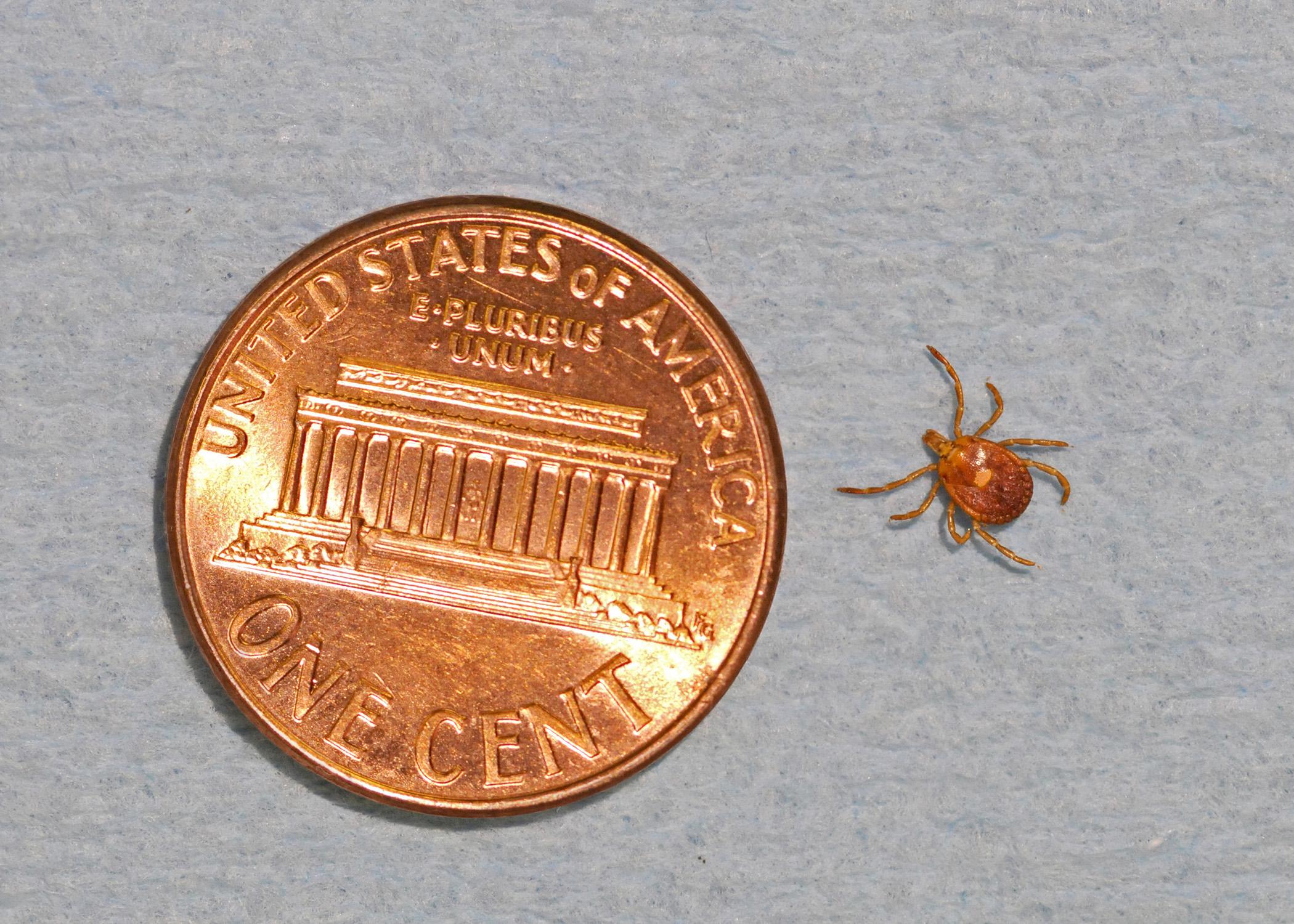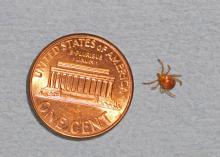Information Possibly Outdated
The information presented on this page was originally released on July 1, 2014. It may not be outdated, but please search our site for more current information. If you plan to quote or reference this information in a publication, please check with the Extension specialist or author before proceeding.
Tick bite can cause a red meat allergy
MISSISSIPPI STATE -- Steak lovers beware: scientists have discovered certain tick bites can cause an allergy to red meat.
Jerome Goddard, medical entomologist with the Mississippi State University Extension Service, said the lone star tick species carries a sugar that can be transmitted through its bite. The transmission of the sugar may cause people to become allergic to red meat.
Goddard said developing the red meat allergy begins with the human body’s natural response to the tick bite. Once bitten, the body produces antibodies, which control the release of histamines. Histamines are responsible for the symptoms associated with allergic reactions.
“When people are exposed to the sugar galactose-alpha-1, 3-galactose or ‘alpha-gal’, they become sensitized to it,” Goddard said. “The next time alpha-gal enters your body, the antibodies will cause histamines to be released, and you’ll experience symptoms of an allergic reaction.
“If a person becomes overly sensitized to alpha-gal, a similar sugar found in red meat can trigger an allergic reaction, too,” he said.
Many people who are bitten by a lone star tick do not develop this oversensitivity to alpha-gal.
“People with a propensity for allergies are more likely to develop the red meat allergy,” Goddard said. “The severity of the allergic reaction will also vary from person to person.”
People with the red meat allergy may experience the body’s typical allergic response, including symptoms ranging from gastrointestinal upset, difficulty breathing, runny nose and eyes, and even anaphylactic shock,” Goddard said. However, these symptoms often do not occur until hours after the red meat is consumed.
“The thing about this allergy is that you get really sick four to six hours after you have eaten,” Goddard said. “It’s hard to make the connection that you are having an allergic reaction to red meat.”
Goddard said he believes the delayed response may be a result of the time it takes the body to digest fat, which stores the sugar in red meat that causes the body have an allergic reaction.
MSU alumnus Kevin Chase knows all too well what it is like to have an allergic reaction to red meat. He developed the allergy while conducting research for his master’s degree at MSU.
“I was in the woods a lot for my research on wood wasps, so I would come home with lots of ticks,” Chase said.
Chase noticed that he would develop a rash hours after eating beef. He cut beef from his diet, but continued eating other red meats, fish and poultry. Later, Chase tried eating beef again at a banquet that served an all-you-can-eat steak dinner.
“I had a few steaks and felt ok until about an hour and fifteen minutes later when I got home,” Chase said. “Then, I developed severe hives and had to go to the emergency room.”
Chase’s allergic reaction quickly escalated to anaphylactic shock.
“After that, I didn’t eat beef for a year and a half,” Chase said. “Now, I can eat a hamburger without having a reaction.”
Others have successfully incorporated red meats back into their diets, too.
“If you wait long enough, your reaction decreases,” Chase said. “Then, you maybe can reintroduce red meats in small portions.”
Chase said he has learned more about his allergy through a blog created by researchers studying it at the University of Virginia. The blog also provides information regarding testing for the allergy.
The best way to avoid the allergy is to prevent tick bites. When walking in tall grass or wooded areas, wear tall boots with pants tucked into socks. This makes the ticks crawl on the outside of the pants where they can easily be seen and quickly removed. Goddard also suggested wearing repellants that contain permethrin as the active ingredient.
Manage the tick population around homes as well. Since most ticks will dry out when exposed to the sun and wind, keep the grass cut low and trees cut back. There are also many pesticides available, which can help control ticks around the home.
“Be sure to read and follow the directions when applying pesticides,” Goddard said.




